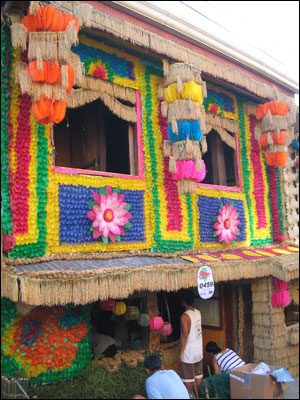TAYABAS, QUEZON, MAY 17, 2007 (MALAYA) The ten-day Mayohan sa Tayabas festival, which celebrates the bountiful harvest of summer, culminates today (May 15) in Tayabas, Quezon.
The festivity, which centers on the Feast of San Isidro Labrador, (St. Isidore) patron saint of farmers, recaptures the town's unique heritage and community life.
The highlight of the May-time fest is the "hagisan ng suman" where revelers get free native cakes from every house.
There is also the traditional parade of "baliskog" (welcome arches made up of native materials) and "suman", as well as the colorful Santacruzan with participants garbed in buri-inspired apparel.
Other activities are trade trainings on business opportunities and basic entrepreneurship, livelihood trainings, an acoustic music night, theater and dance contest, budin plating and cake contest, agro-trade fair and other socio-civic events.
Also launched was the 1st Invitational Trail Dirt Bike Racing Competition to explore the town's scenic outdoors.
Situated 100 kilometers southeast of Manila, Tayabas is host to historic spots being the provincial capital during the Spanish era.
Among these are the century-old Basilica Minore of St. Michael the Archangel, which reputedly has the longest church aisle in the country; the Casa de Comunidad, a museum and cultural center, and stone bridges.

Tayabas Quezon rests at the foot of the mythical Mount Banahaw. It is home to Basilica Minor ni San Juan Miguel Arkangel, named as the second biggest and one of the most beautiful churches in the Philippines. Tayabas, Quezon is host to the "Mayohan sa Tayabas" one of the country's most celebrated harvest festivals.





